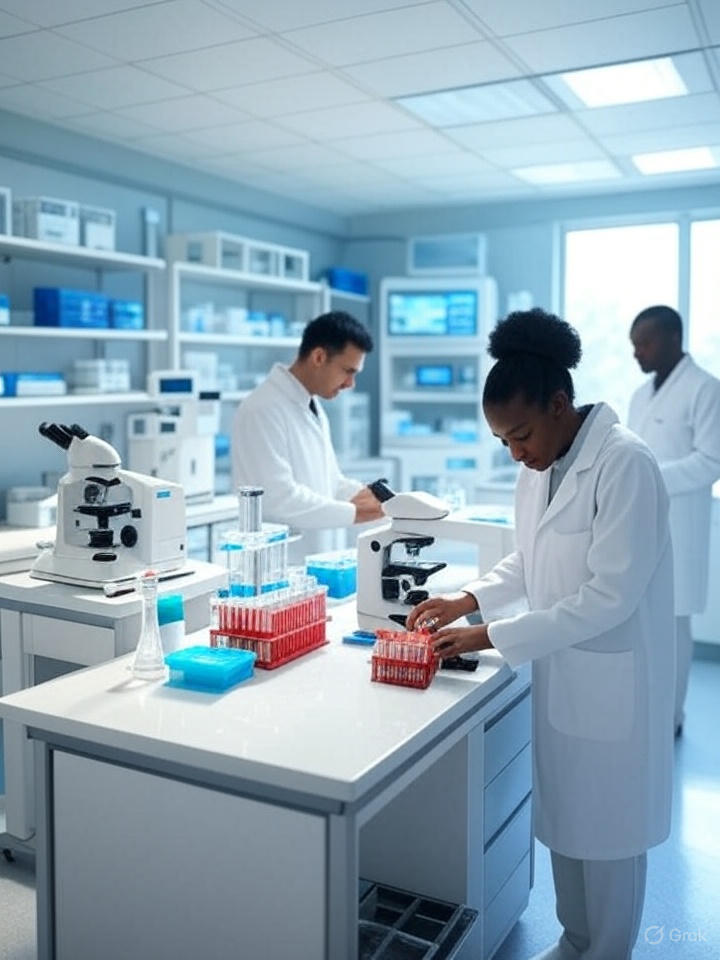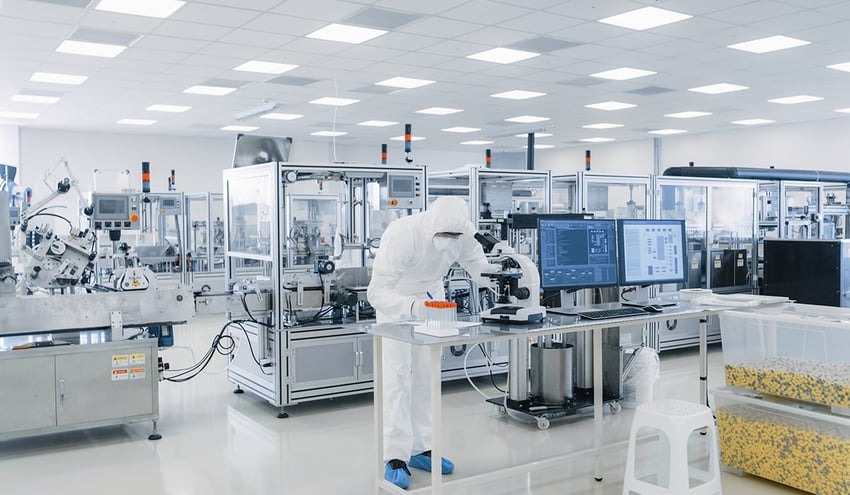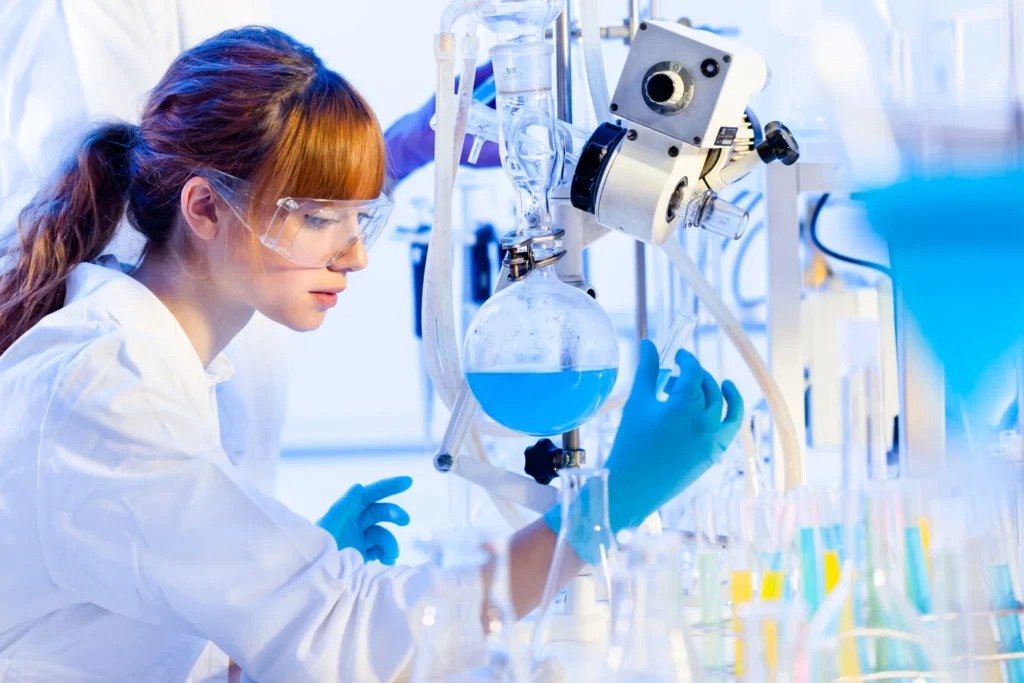The Ultimate Guide for Professionals, Researchers, and Entrepreneurs
Introduction
A medical device testing laboratory is central to healthcare innovation, patient safety, and regulatory compliance. As the medical and healthcare sectors expand, along with research and industrial applications, there is unprecedented demand for reliable labs that can guarantee the safety, efficacy, and quality of medical devices. This comprehensive guide explores everything you need to know about establishing a medical device testing lab—targeted at professionals, researchers, and business owners seeking to serve the medical, research, industrial, or educational sectors. Embedded throughout are SEO-friendly keywords such as medical device testing lab setup, medical device testing equipment, laboratory accreditation, medical device business plan, and more.

What is a Medical Device Testing Lab?
A medical device testing laboratory specializes in the safety, performance, and regulatory assessment of a broad spectrum of devices—from electrical equipment and implants to software-driven systems and diagnostic tools. These labs ensure that products meet stringent international and local regulatory requirements before entering the market, thereby safeguarding patient well-being and supporting industry credibility.
Core Functions of a Medical Device Testing Lab
A well-designed medical device lab performs a variety of tests and services:
- Safety Testing: Electrical safety, mechanical integrity, and biocompatibility assessments.
- Functional Testing: Evaluation of device performance under simulated use.
- Regulatory Compliance: Testing to standards like IEC 60601, ISO 10993, and others.
- Environmental and Stress Testing: Assess device durability in various conditions.
- Calibration and Validation: Ensuring measurement tools and systems are precise.
- Microbiological and Chemical Analysis: Checking for contamination and leachable substances.
- Software Validation: For devices with embedded or connected software.
SEO Keywords: medical device testing lab setup, medical device quality assurance, regulatory compliance, product certification.
Planning Your Medical Device Testing Lab Setup
1. Define Your Lab’s Purpose and Scope
Are you focusing on:
- Medical Devices (diagnostic, surgical, therapeutic)
- Research Prototyping and Preclinical Testing
- Industrial Device/Component Validation
- Educational Training and Skill Development
Each focus influences equipment needs, infrastructure, and regulatory objectives.
2. Market Analysis and Medical Device Lab Business Plan
- Target Market: Map demand among medical device manufacturers, hospitals, startups, research institutions, or educational bodies.
- Competitive Landscape: Analyze local and regional players, their offered services, pricing, unique selling propositions, and gaps you can fill.
- Regulatory Framework: Understand local (e.g., CDSCO in India), national, and international regulatory requirements—NABL, ISO 17025, CAP, ISTA, and more45.
- Financial Planning: Cover startup costs, operational expenses, pricing strategies, revenue projections, and funding sources.
SEO Keywords: medical device testing business plan, lab accreditation, medical labs market analysis.
Facility and Infrastructure Requirements
Location and Space Planning
- Accessibility: Proximity to medical clusters, industrial parks, or academic institutions.
- Compliance: Ensure location meets local zoning, environmental, and safety regulations.
- Space Allocation:
- Reception and waiting area
- Sample collection and accessioning
- Analytical/testing areas (segregated by device types and risk levels)
- Instrumentation rooms
- Biosafety and chemical storage
- Waste management area
- Administrative and staff amenities
Utilities and Safety Provisions
- Redundant power supply (with backup UPS/generators)
- Reliable water supply and drainage
- Specialized HVAC for cleanroom zones (as per device category)
- Fire safety: extinguishers, alarms, and designated exits
- Handwashing and emergency eyewash stations
Essential Medical Device Testing Lab Equipment
A standard medical device testing lab requires a suite of specialized instruments. Selection depends on your lab’s scope, but typically includes:
| Equipment | Function/Use | Reference Standards |
|---|---|---|
| Electrical Safety Analyzer | Tests electrical leakage, insulation, grounding | IEC 60601-1, IS 13450 |
| Environmental Chambers | Simulate temperature, humidity, vibration extremes | IEC 60068 |
| Mechanical Testing Systems | Evaluate tensile, compression, flexural strength, impact | ASTM, ISO 11137 |
| Gas/Liquid Chromatograph (GC/LC) | Analyzes chemical composition and contamination | ISO 10993-18 |
| Spectrophotometer/Fluorometer | Quantifies chemicals, checks for leachables | ISO 10993-12 |
| Microbiological Test Suite | Bioburden, endotoxin, sterility testing | ISO 11737-1, EP 2.6.14 |
| Force & Torque Testers | Validates performance of mechanical and wear parts | ASTM F88, ISO 80369 |
| Biosafety Cabinet (Class II/III) | Safe handling of biological/chemical hazards | IEC, NSF Standards |
| Simulators/Patient Monitors | Performance testing for diagnostic, implantable, wearable devices | IEC 60601, ISO 14708 |
| Computer & LIMS | Data acquisition, analysis, reporting, quality traceability | GLP, ISO 17025 |
| Cleanroom Supplies | Maintain sterility for high-risk devices | ISO 14644-1 |
Keywords: medical device testing equipment, lab instruments, calibration systems.
Regulatory and Accreditation Considerations
1. National and International Standards
- India: CDSCO registration, NABL accreditation, BIS for specific devices.
- International: ISO 13485 (quality), ISO 17025 (testing/calibration), IEC 60601 (electrical safety), ISO 10993 (biocompatibility), EU MDR, US FDA standards.
- Product-Specific: For example, cardiac and vascular devices (ISO 5840, ISO 25539), implantable devices (ISO 14708).
2. Accreditation Process
- Submit application to relevant authority (e.g., NABL, ISO).
- Ensure QMS documentation: SOPs, equipment logs, staff records.
- Conduct internal audits and pre-assessment.
- Pass external audits and demonstrate proficiency in test methods.
- Maintain ongoing compliance via internal QC and proficiency testing.
SEO Keywords: lab accreditation, ISO 17025, NABL, medical device standards.
Laboratory Design and Workflow
Layout Considerations
- Unidirectional Workflow: Prevents cross-contamination and aids regulatory compliance.
- Zoning: Partition analytical areas by risk category (e.g., clean vs. hazardous, wet vs. dry labs).
- Sample Tracking: Use barcoding or LIMS for seamless traceability.
- Automation: Automated handling for high-volume or repetitive tests increases throughput and reduces error.
Supporting Sections
- Environmental zone for climate testing
- Electrical/mechanical section for device performance
- Microbiology/chemistry labs for sterility and leachable analysis
- Data room for LIMS and reporting
SEO Keywords: laboratory workflow, medical device testing lab design, sample management.
Staffing and Training Needs
Core Roles
- Lab Director/Manager: Responsible for regulatory, operational, and quality oversight.
- Biomedical Engineers: Lead device performance and mechanical testing.
- Qualified Technicians: Run calibrations, maintain equipment, perform routine testing.
- Quality Manager: Oversees documentation, compliance, proficiency testing.
- Clinical Consultants/Pathologists: For clinical interpretation and report validation.
- IT and LIMS Support: Data management, cybersecurity, and process automation.
- Administrative Support: Billing, logistics, client relations.
Training and Competency
- Initial training on SOPs, safety, and device-specific protocols.
- Ongoing education in new technologies, updated standards, and best practices.
- Regular external workshops and internal competency assessments.
SEO Keywords: medical device lab staffing, laboratory technician roles, training programs.
Key Medical Device Tests and Applications
| Category | Example Tests | Clinical/Industrial Relevance |
|---|---|---|
| Electrical Safety | Leakage current, insulation, grounding | All powered medical devices—patient & operator safety. |
| Mechanical Testing | Drop, vibration, compression, flexural strength | Surgical instruments, implants, durable medical equipment. |
| Biocompatibility | Cytotoxicity, irritation, sensitization | Implants, wearable devices, skin-contacting equipment. |
| Sterility and Microbiology | Sterility assurance, endotoxin, pyrogen, bioburden | Single-use devices, surgical tools, diagnostic kits. |
| Chemical Analysis | Extractables, leachables, material ID | Plastic components, packaging, drug-device combinations. |
| Software Validation | Verification, functional testing | Digital health products, remote monitoring, embedded software. |
| Functional Performance | Device response time, signal accuracy, durability | Monitors, diagnostic, infusion, imaging, and therapeutic devices. |
| Environmental Stress | TEM/Humidity cycling, fluid ingress, corrosion | Devices intended for harsh conditions or re-use13 |
Quality Management and Safety Protocols
Quality System
- Implementation of a robust Quality Management System (QMS), often aligned with ISO 13485 or ISO 17025.
- Regular internal/external calibration of equipment.
- Participation in proficiency and round-robin testing with peer labs.
- Documentation of all processes, deviations, and corrective actions.
- Strict audit trails and traceability for all results.
Lab Safety
- PPE for all staff
- Controlled access to hazardous areas
- Protocols for chemical, biological, and electrical safety
- Biohazard and chemical waste segregation and certified disposal
SEO Keywords: laboratory quality control, lab safety protocols, medical device quality.
Steps to Launch a Medical Device Testing Lab
- Define purpose and service scope
- Assess market and regulatory landscape
- Prepare business plan and secure funding
- Select suitable location and facility design
- Procure and qualify instruments and IT infrastructure
- Staff the lab with trained, qualified personnel
- Develop comprehensive SOPs and quality systems
- Apply for required licenses and pursue accreditations
- Initiate services, monitor quality, and build client relations
- Continuously improve capabilities and adapt to new standards
Budgeting and Financial Planning
Startup Costs
- Facility/renovation expenses
- Equipment purchase and installation
- Laboratory Information Management System (LIMS)
- Initial inventory of reagents and PPE
- Licensing and accreditation fees
- Marketing and business launch
Operational Expenses
- Salaries and staff benefits
- Equipment maintenance/service contracts
- Consumables and reagents
- Utilities (power, water, HVAC)
- Waste disposal
- Insurance and compliance renewal
Revenue Streams
- Direct client testing (manufacturers, hospitals, importers)
- Research and development contracts
- Calibration and validation services
- Training and workshops
SEO Keywords: medical device lab budgeting, lab operational costs, revenue streams.
Marketing and Growth Strategies
- Digital Marketing: focused website, professional networking, social media.
- Partnerships: Collaborate with device manufacturers, hospitals, and research bodies.
- Certifications: Emphasize lab accreditations (NABL/ISO) to build trust.
- Client Service: Fast turnaround, transparent pricing, and expert reports.
- Innovation: Invest in automation, advanced analytics, and new test offerings.
- Continuous Learning: Attend conferences, publish white papers, and engage in community education.
SEO Keywords: laboratory marketing strategies, medical device lab growth, lab partnerships.
Trends and Innovations
- Automation & Robotics: Increased throughput, reduced error, faster turnaround.
- Digital Health & AI: Testing for smart wearables, AI-driven diagnostics, integrated software validation.
- Green Labs: Sustainable practices with energy-efficient equipment and eco-friendly disposables.
- Remote Testing & Teleconsultation: Digital sample receipt, remote report delivery, and expert networks.
Checklist for Medical Device Testing Lab Setup
- Define scope and services
- Conduct market analysis and business planning
- Secure licenses and accreditations
- Design compliant, optimized facility
- Procure, install, and qualify equipment
- Recruit and train specialist staff
- Develop SOPs and QMS
- Go live and build reputation through quality and transparency
- Evolve lab services with technology and regulatory updates
Conclusion
Launching a medical device testing laboratory is a complex, high-impact endeavor at the intersection of science, regulation, and enterprise. By adhering to best practices in planning, infrastructure, regulatory compliance, quality systems, staffing, and ongoing innovation, your lab can ensure the safety and efficacy of devices while carving a distinguished space in medical, research, industrial, or educational domains. Always stay attuned to emerging regulations and advances to remain a trusted partner in the future of healthcare technology.
Keywords Used
- medical device testing lab setup
- medical device testing equipment
- laboratory accreditation
- medical device business plan
- medical device quality control
- lab safety protocols
- diagnostic lab setup
- research labs
- industrial labs
- educational labs
- regulatory compliance medical device
- laboratory marketing strategies
- medical device standards
- lab workflow optimization



